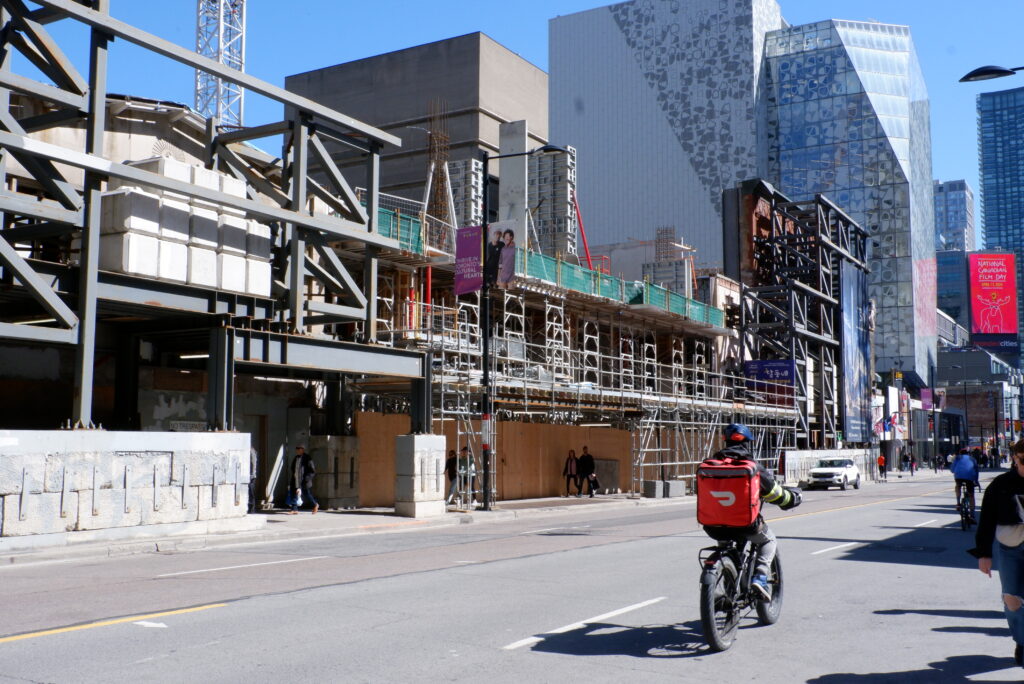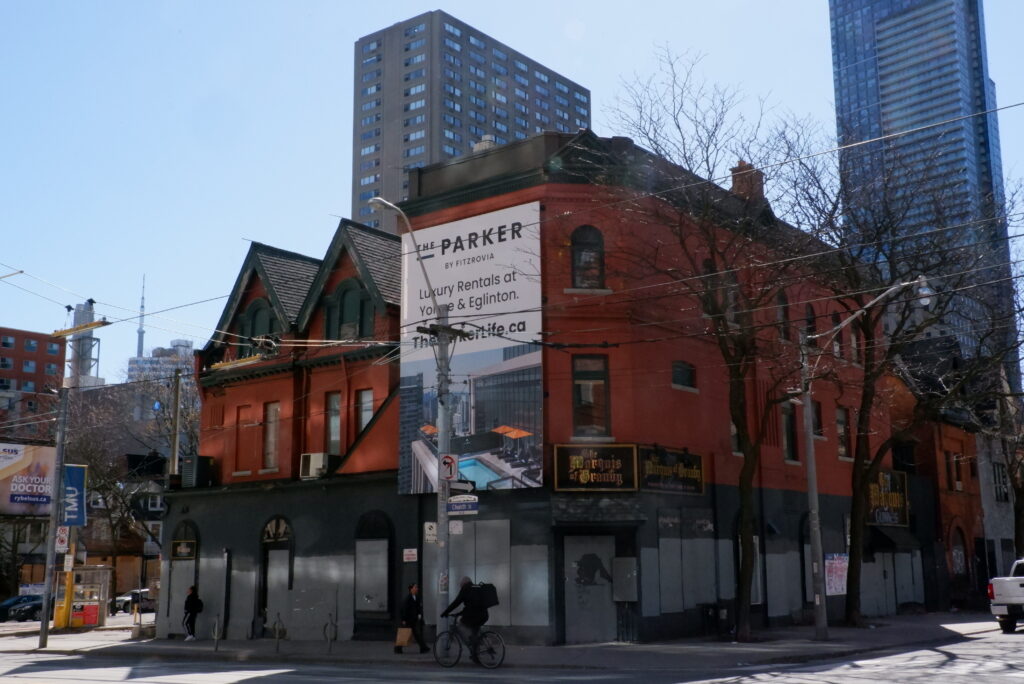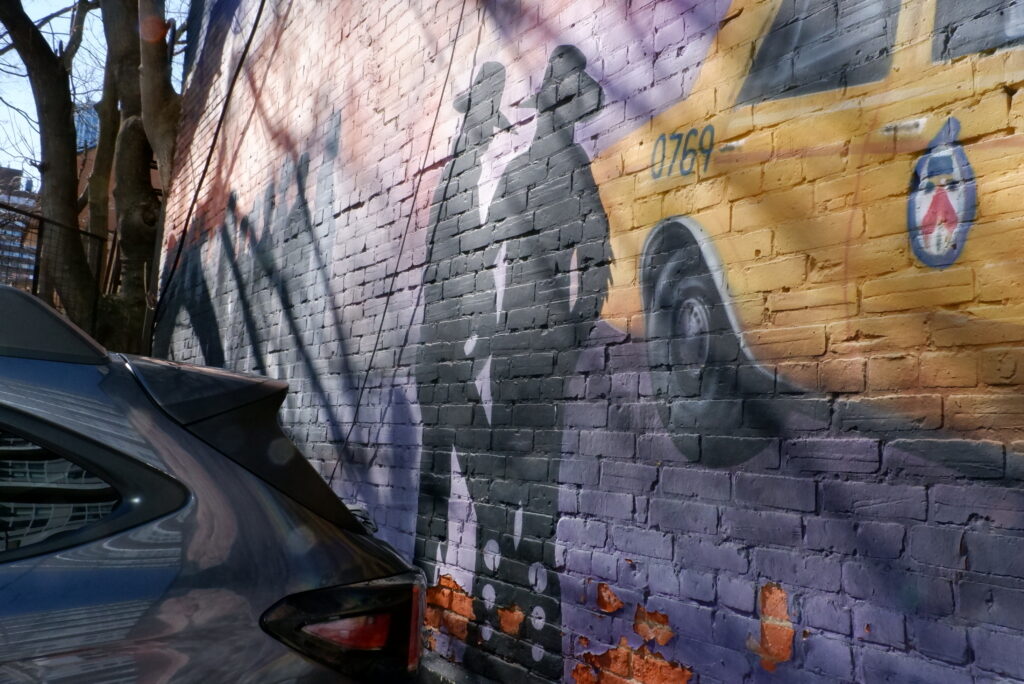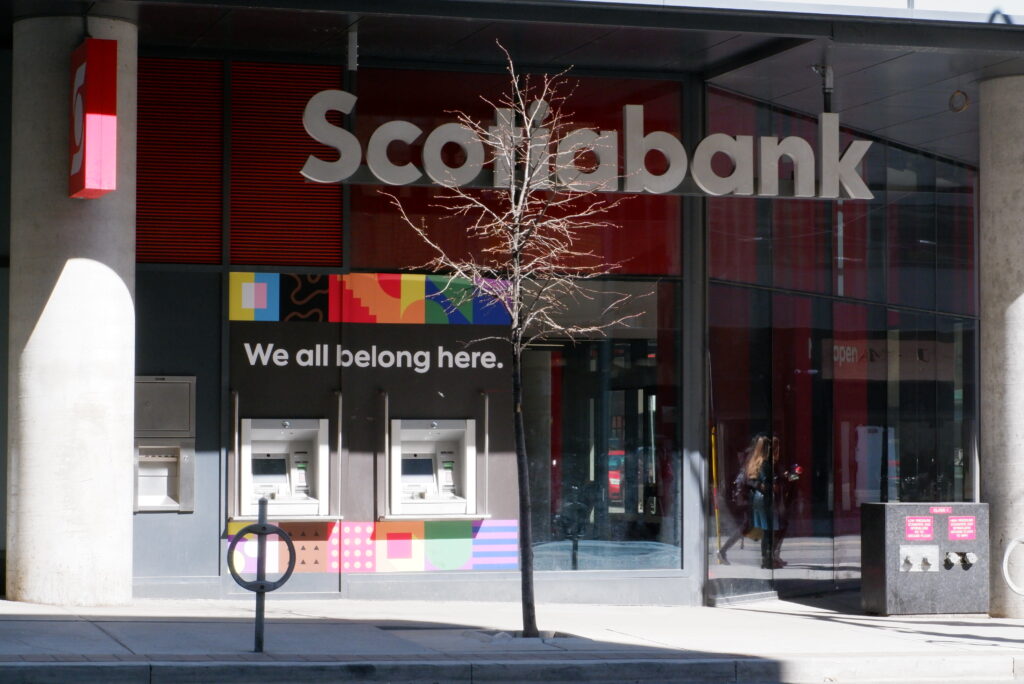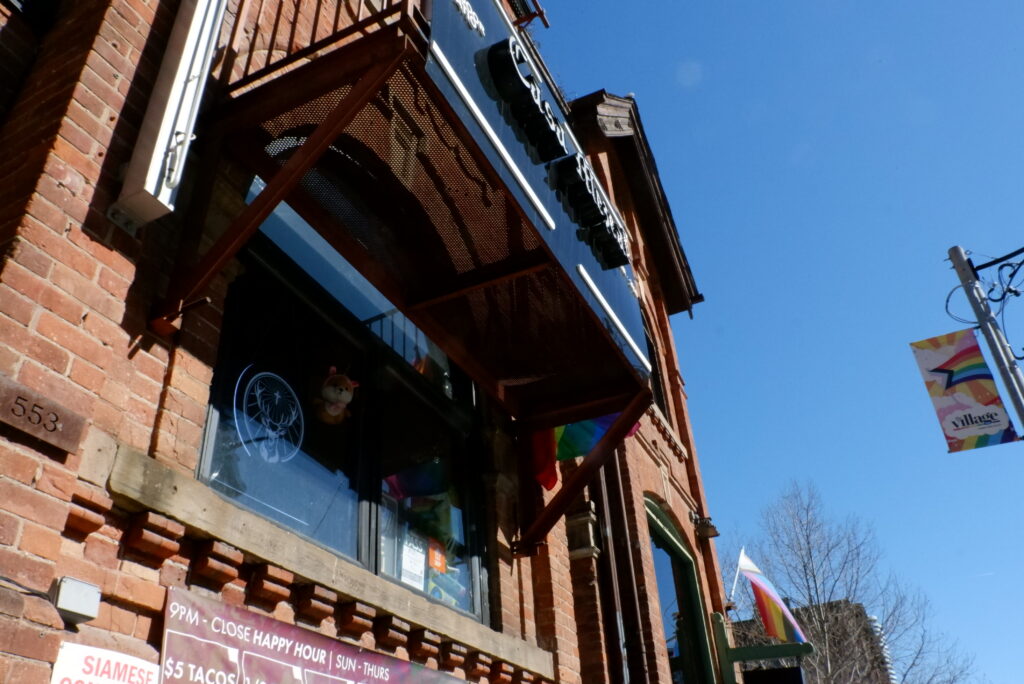From behind the bar at the historically queer Buddies in Bad Times Theatre there was a clear view of the crowded dance floor. Hundreds of bodies were pressed up against each other, whirling and convulsing to the music that pounded from speakers lodged high above the ground. From their perch in a metal cage the DJ laid down a frenzied Electronic Dance Music (EDM) track that rattled the room.
The dancers basked in the pulsating neon lights, every flash illuminated them: jean shorts here, handcuffs there, fuzzy ears, a nipple or two and plenty of harnesses. One of the event staff even ditched his earpiece and suit for a sparkly shirt and shorts that resembled the disco balls that swung from the rafters. The bartenders fought tooth and claw to be there. Why?
Well, the furries at Fierce tip generously.


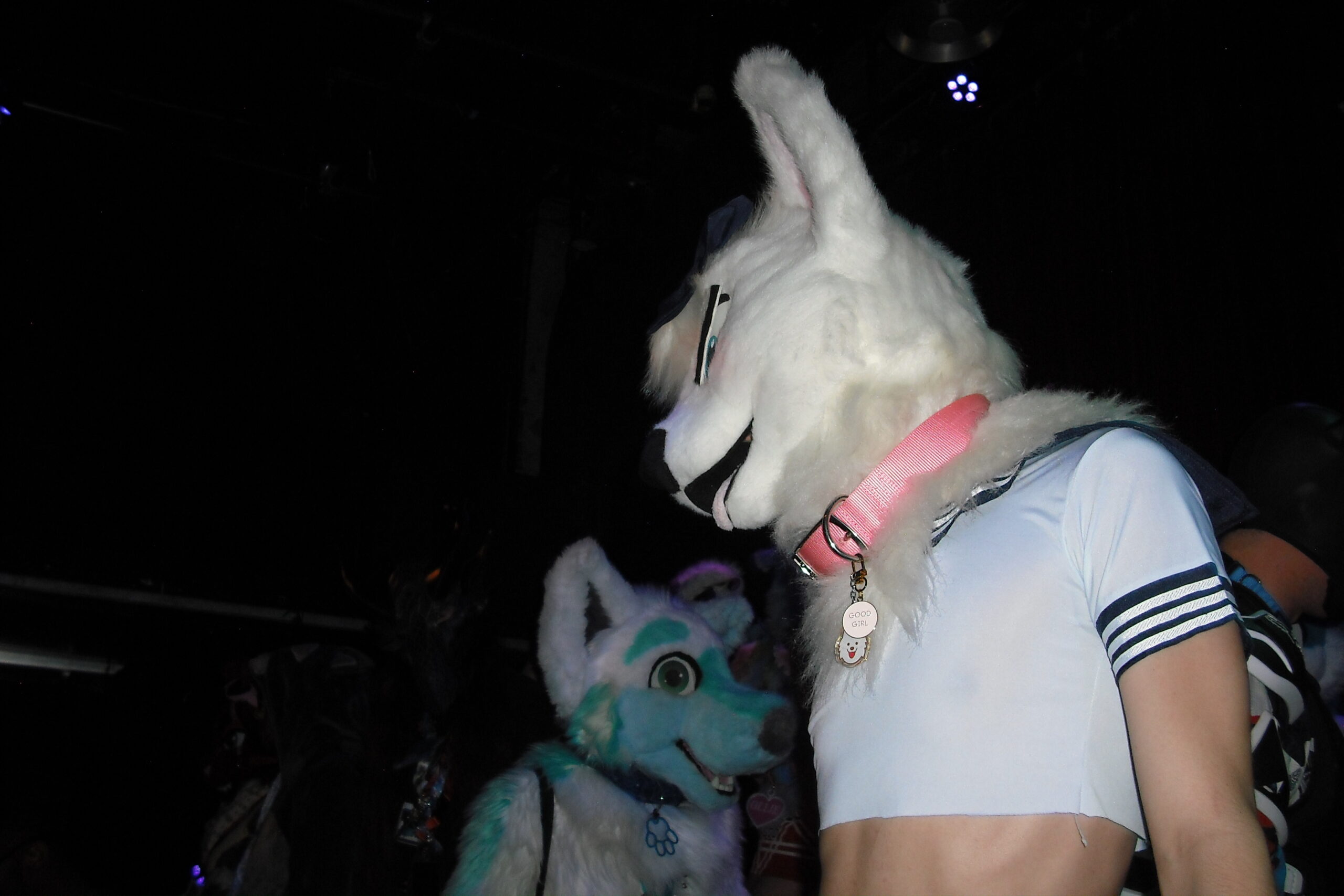
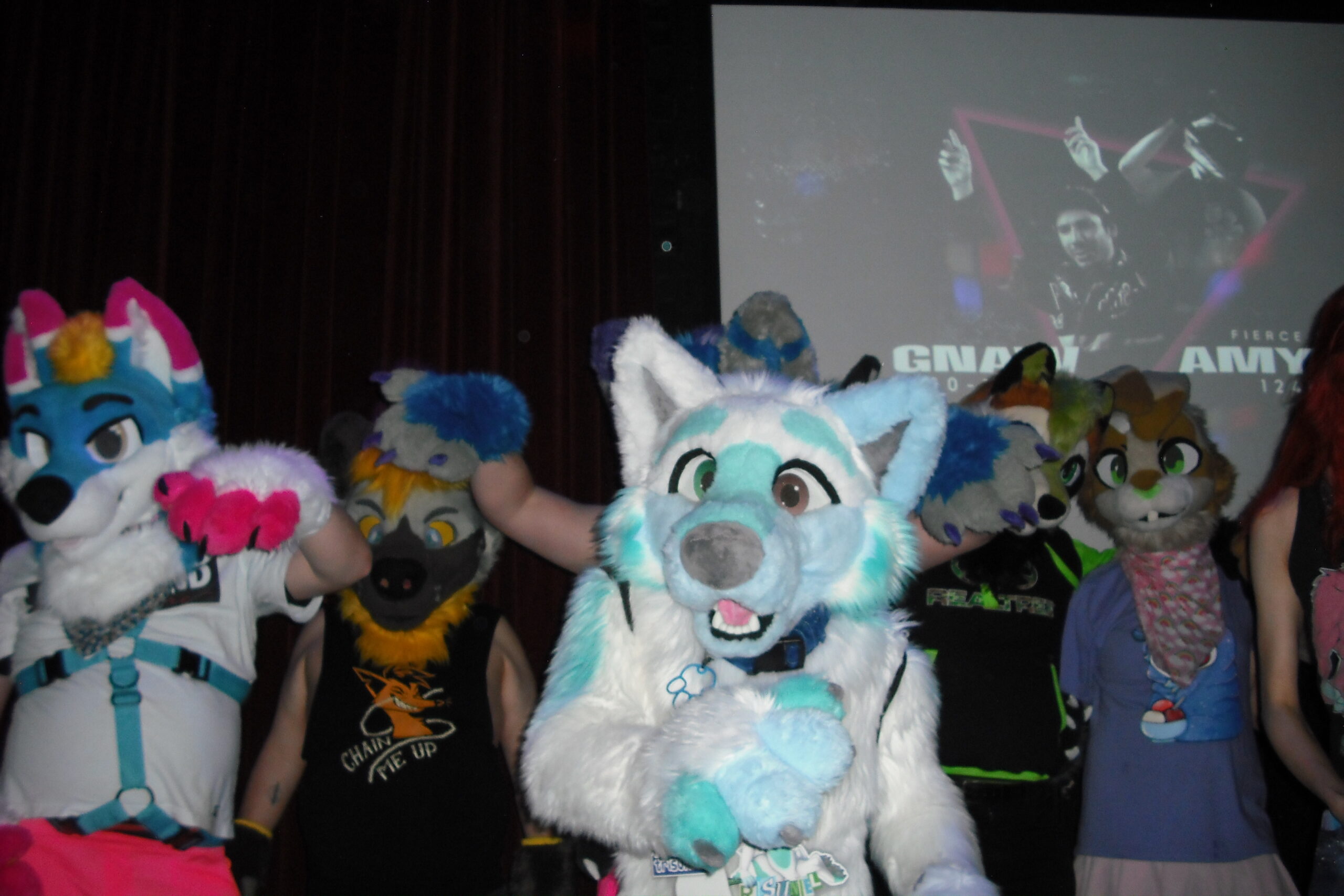
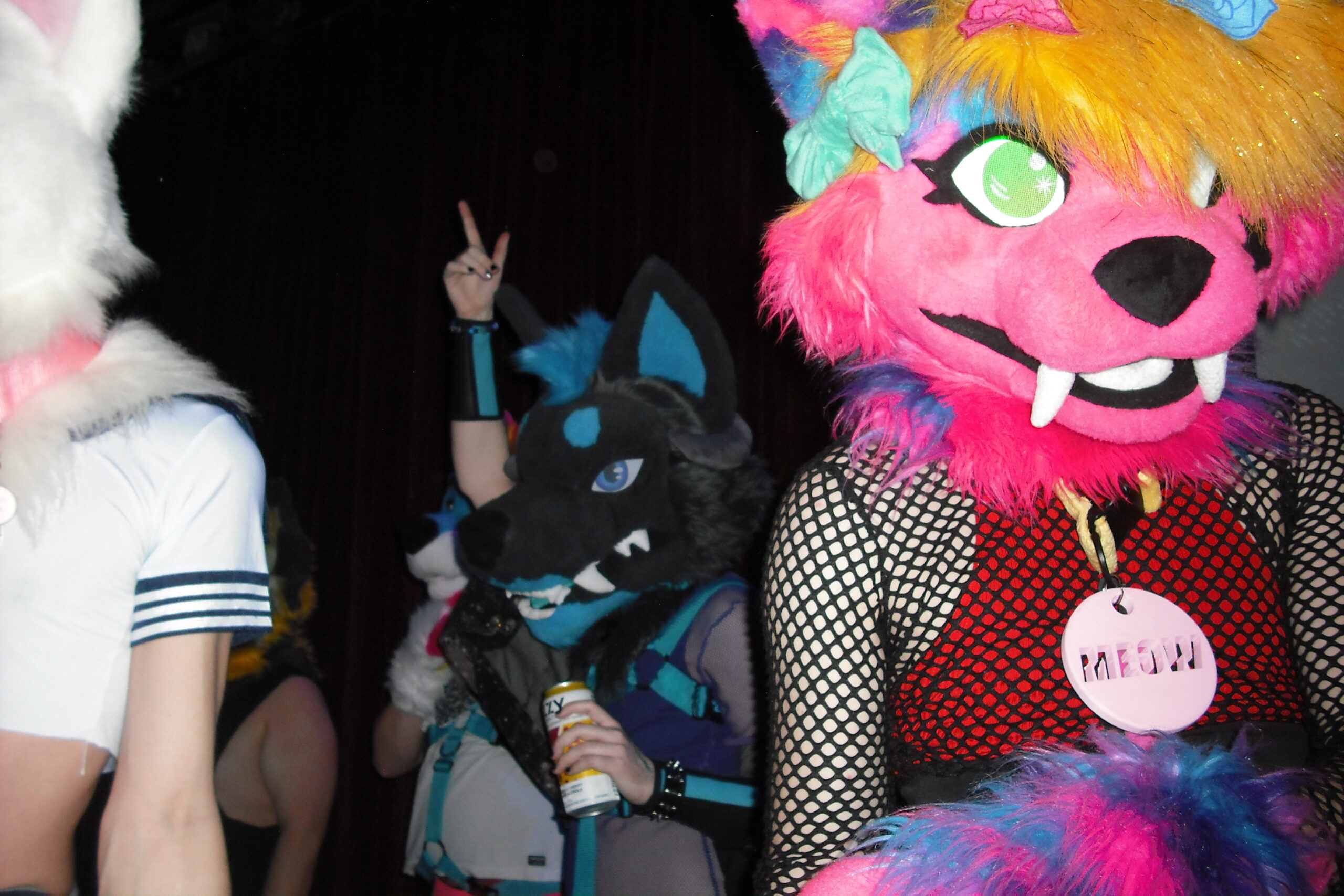
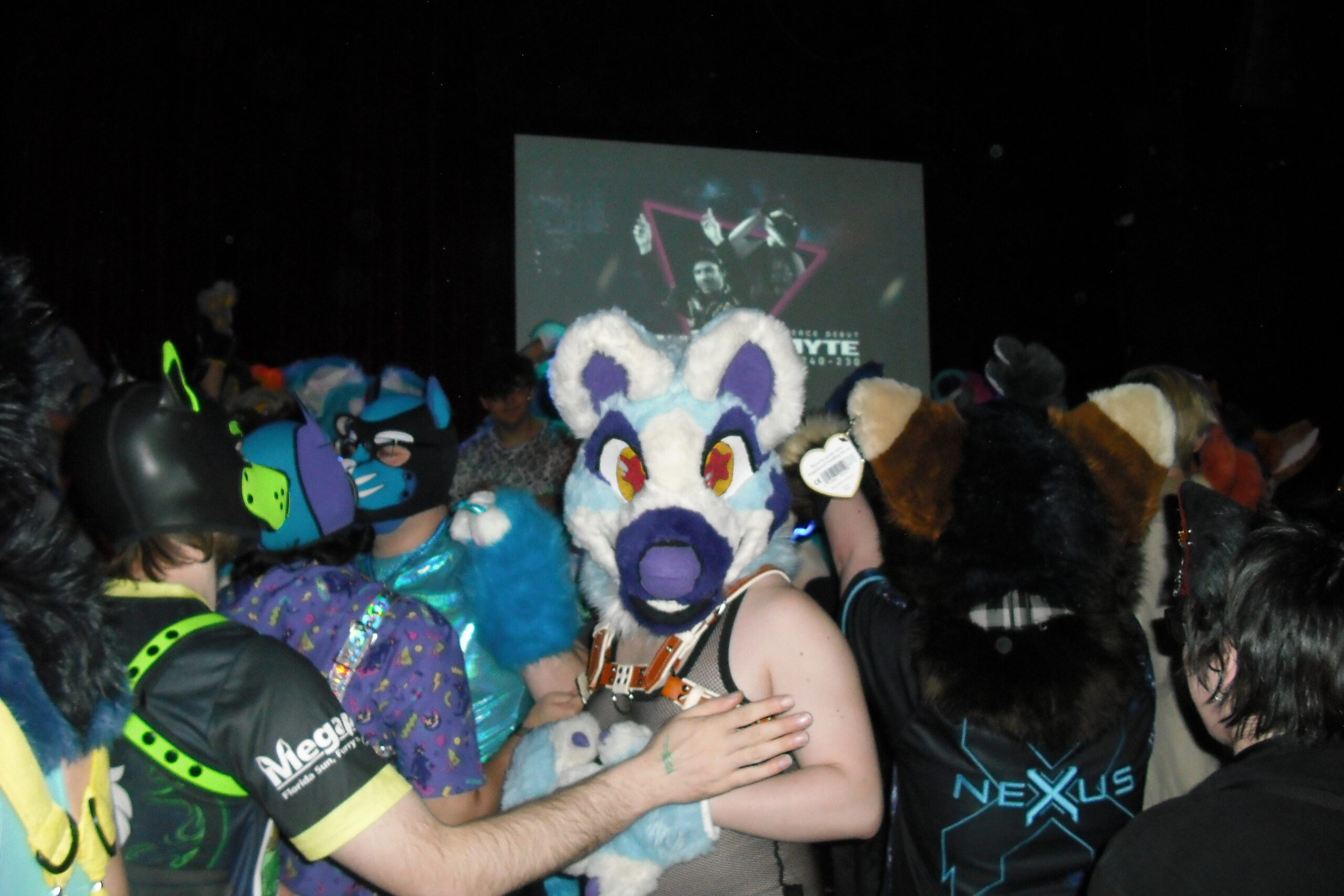
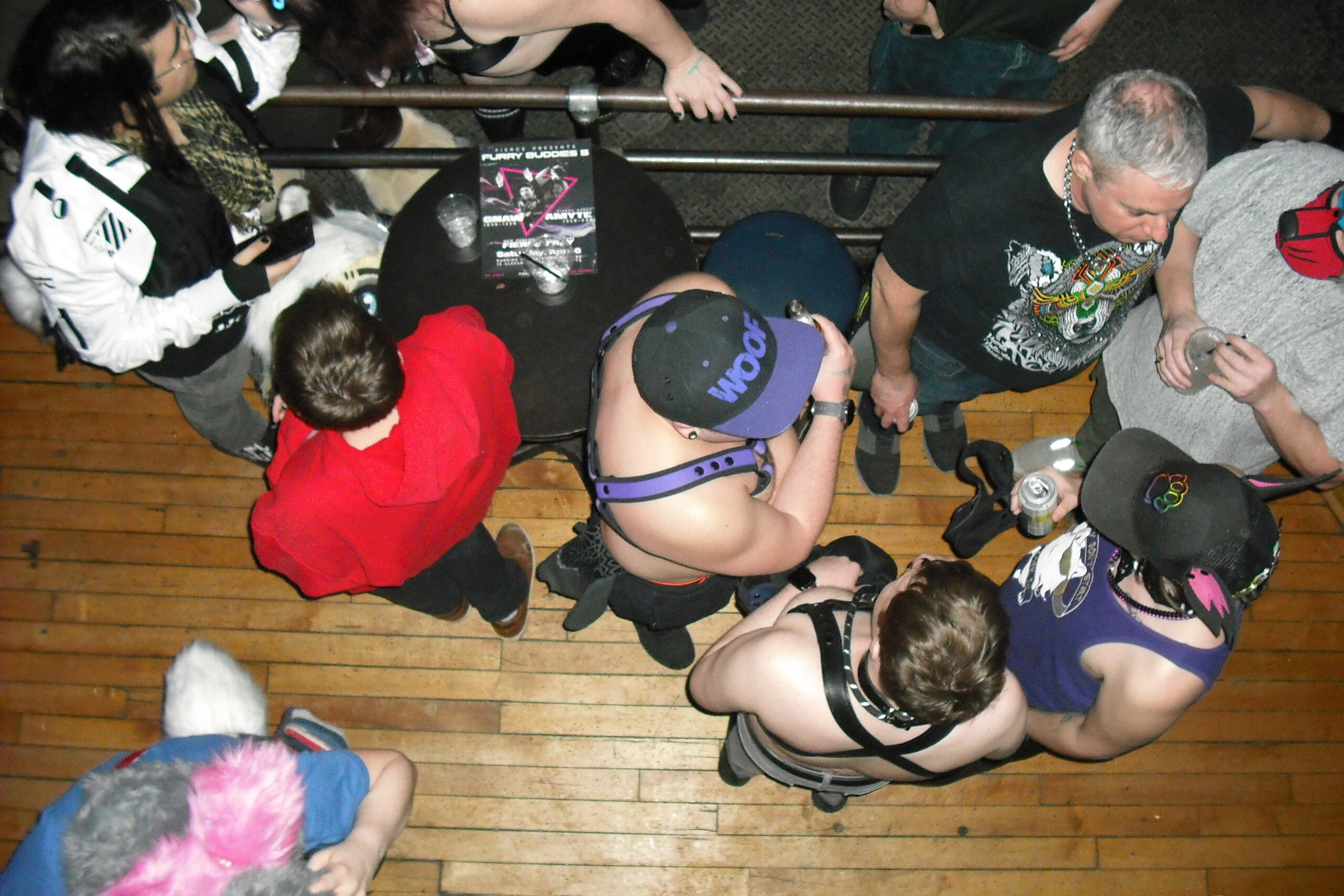
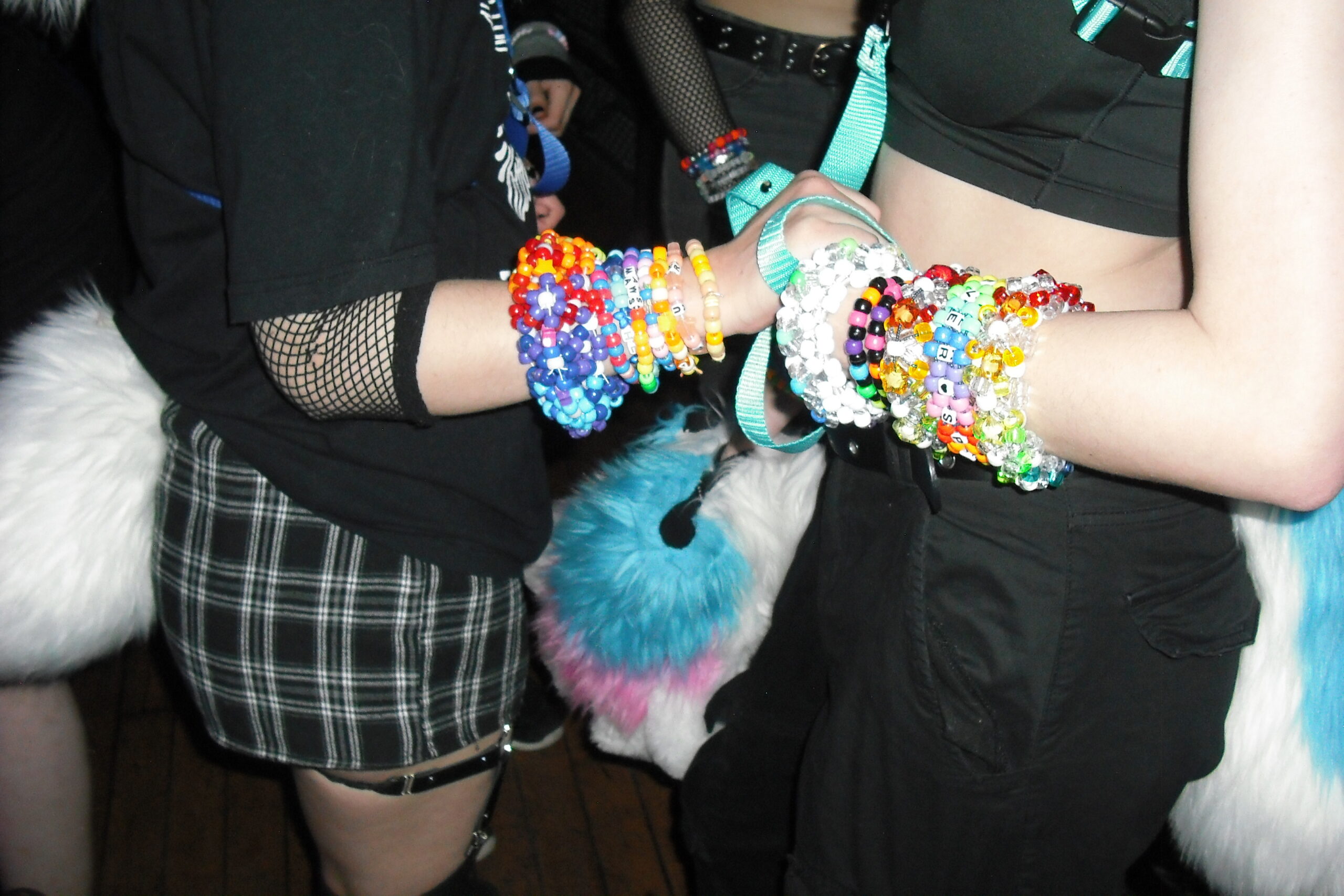
The Fierce Furry Buddies rave began as a series of late night text messages between two friends, known to furries as Melancholy and Mystic. They were commiserating about the disappearance of in-person meet-ups for furries over the pandemic. These raves and parties served as vital modes for self-expression and community-building for furries, and by extension, the LGBTQ+ community.
Fierce was too good an idea to be tossed on the compost heap of ‘yeah we should do that sometime’ late night ideas are so often left to rot in. So, Mystic, Melancholy and their small team of a lawyer, visual artist and audio-visual producer crafted a manifesto to be more vocally queer, anti-status-quo and kinky than any rave before – an event that truly paid homage to those who came before.
Two years after those initial texts, Mystic, Melancholy and fellow Fierce team member, Corey Manuel, were seated around a table at Future Bistro in the Annex. They scarfed down their respective carrot cakes and tortes while providing a crash course in furry culture. For the uninitiated, a furry, in the simplest of terms, is a person who enjoys anthropomorphic animal characters.
“We’re not really fans of any particular thing,” co-founder Mystic said, flicking their ‘I ♥ BOOBS’ bracelet. They go on to describe furries’ self-sustaining ecosystem. “It becomes very anti-culture, anti-capitalist in a way. When you look around society, everything’s very pop culture and ‘oh you’re a fan of this now you need to spend money on merch.’ […] We’re just artists creating.”
The origins of furry are disputed, locked in a web of pre-internet science fiction conventions and underground zine culture. The suggestion, though, that the founders were straight white men drawing bodacious vixens was met with polite, yet firm corrections from the Fierce team.
“The first fursona was created by and owned by a Black man,” former organizer, Melancholy said. For a guy whose fursona is a snarling hellhound, he was the most soft-spoken at the table. “I believe the first fursuit was Hilda the Bambioid who was a drag queen.”
“This is Mark,” said Mystic holding up an image of Mark Merlino. “I can’t find his partner’s name. I would probably have to go watch [The Fandom] again, but they’re the two that basically started it all.”
Merlino and his partner Rod O’Riley’s status as queer men cannot be overlooked. According to Furscience, an international group of scientists and researchers, 80 per cent of furries identify as LGBTQ.
The Fierce team agreed that furry is an LGBTQ+ subculture. A lot of qualities of the queer community carry over, such as diversity, affirmation and sex positivity. Melancholy attested that the sizable asexual furry population also helped to contradict the myth that furries are a sex-crazed fetish culture.
These LGBTQ+ sensibilities, however, also include an aversion to historically hostile social institutions like law enforcement, academia, city planners who spearhead the gentrification of gay neighbourhoods and the mainstream media. Two furries said that they had previously turned down opportunities to work with The Daily Show and Vice News, hesitant of being ridiculed. One of those individuals was Dan Markey, also known as Silfur.
Dubbed “the original bunny boy,” Silfur is one of the early members of Toronto’s furry community. As a teenager Silfur watched cartoons with his younger sister. A neon green rabbit in bright red spaceman gear blasted onto the screen in a shower of explosions and sparkles.
The show was a one-season-wonder called Bucky O’Hare and the Toad Wars!. Silfur was enamoured, and from then began to devour more bunny-based media like Watership Down.
Curious as to whether there were any others like him, obsessing over anthropomorphic characters, Silfur descended into his parents’ basement. He sat down at his second-hand Commodore 64 and coded a CSS website on a pre-pictures internet: a message in a bottle cast into the sea of dial-up.
“I started getting into bulletin board systems on computers where one computer dials into another person’s system,” explained Silfur, now silver haired and living in British Columbia. “I created this narrative where I was a wolf who really wanted to be a rabbit but couldn’t be, and everyone else who logged onto the board was a rabbit.”
Silfur was not alone. He met other furries over the internet, but it was not until an online friend from California alerted the university student, now living in Toronto, to the presence of real life furries just a couple of blocks away.
“In telling me about all the different people who were there he told me about these couple of gay furries,” Silfur said. “I was like, ‘Oh really, that’s interesting,’ and I tried to act like I was nonchalantly interested. I was very interested. By this point I didn’t consider myself straight.”
One of those “gay furries,” Cargo, became Silfur’s first boyfriend and the furries became “the family that [he] chose”. Once again, he was not alone.
Years later Roo Raymond would make a similar pilgrimage to Toronto away from his small town upbringing and homophobic bullying. A childhood obsession with The Secret of NIMH led him to internet communities, at first joining a werewolf therian group which he found a little too intense. The people playing FurryMUCK were having more fun and he demanded to be where the party was at.
In Toronto, Roo met Silfur through a mutual friend. By that point Silfur had become something of a celebrity through his online forums and conventions for his outgoing personality and pin-up model body, according to Silfur.
The day of their first hang out, Silfur had convinced Roo to take a martial arts class with him, and after that “wild” experience, they were back at Silfur’s place. Roo was crashing on the couch and Silfur decided to sleep on the floor to keep him company. Twenty minutes after Roo laid down, Silfur abruptly popped up to face him.
“Hey, Starwolf told me that you’re straight. Are you straight?”
No. Roo finally admitted it. No, he was not straight.
“Oh, OK,” Silfur replied before laying back down to sleep. It was not a big deal here. Here it was normal.
More comfortable in his own sexuality, Roo joined the ragtag group of gay and trans furries who would tear around Church-Wellesley staples, like Babylon martini bar. The owner, nicknamed the Martini Nazi, took a liking to them. He would guarantee tables at his highly sought-after establishment where they had free range of the three storey bar.
They also went dancing at the charmingly seedy The Barn & Stables, 5ive lounge, Zipperz club, and the strip joint Remington’s where Silfur spent a brief stint working before deciding the cocaine-laced lifestyle was not for him.
All of these places are closed. Toronto being worse off for having lost vital pieces of gay culture. These were places LGBTQ+ individuals could go where they felt safe and did not have to justify their existence, now torn down to build another luxury condo. Roo described the loss of Babylon to him personally as “like losing my ‘Cheers.’”
Vital pieces of intergenerational furry culture were lost in these closures as well. Furthermore, during the COVID-19 pandemic, many furry dance parties like Kerfluffle, Floof!! and Howl ended or went on indefinite hiatuses, never to return.
And that is when Fierce stepped up to fill the void.
“The venue was awful, specifically to women and femme-presenting people,” Mystic said of one of the events pre-dating Fierce. “They had a particular bouncer that just made us all feel uncomfortable because he’d be a little too pushy with the flirting.”
“We were wanting to steer away from that,” Mystic continued. “Being in a queer theatre is awesome because it’s queer people and you’re not going to get the same kind of harassment.”
Through this mission statement, and a feat of grassroots networking, the Fierce rave rapidly ascended to become one of the Toronto furry community’s most anticipated events. On rave nights, 250 attendees gather in the Buddies in Bad Times Theatre to celebrate their queerness, their kinks and their right to be unapologetically themselves.
A far cry, but perhaps not all too alien to Silfur dancing at The Barn & Stables, facing his friends to combat his social awkwardness. Hoping that just maybe there would be other queer furries out there in search of someone like them.

